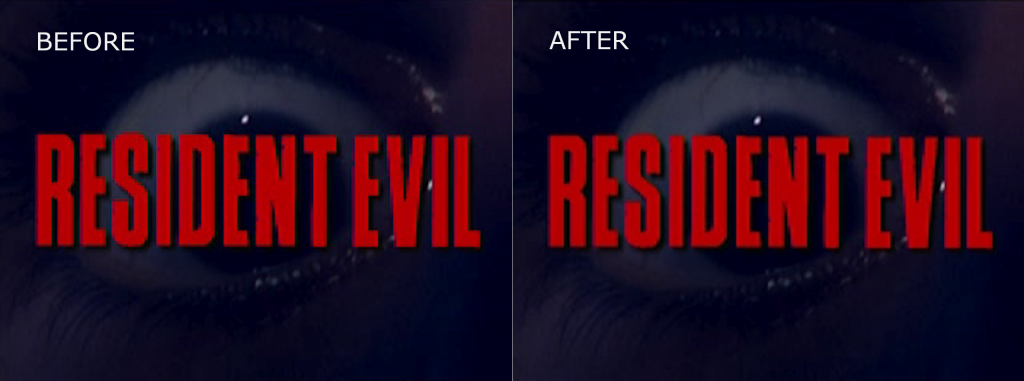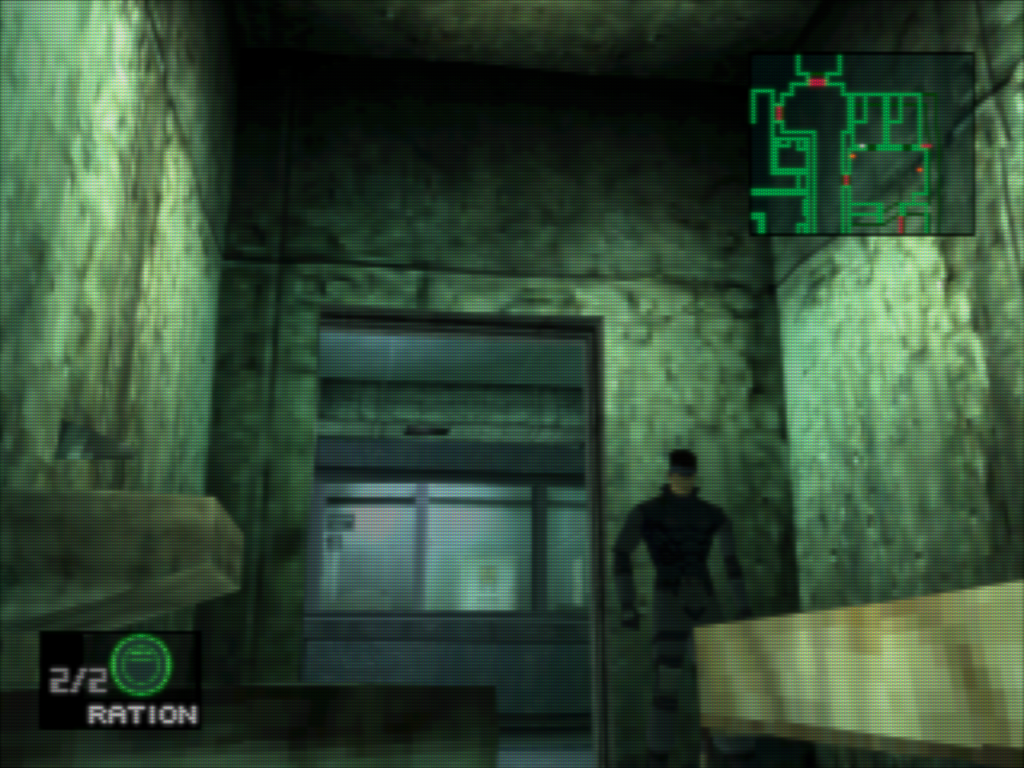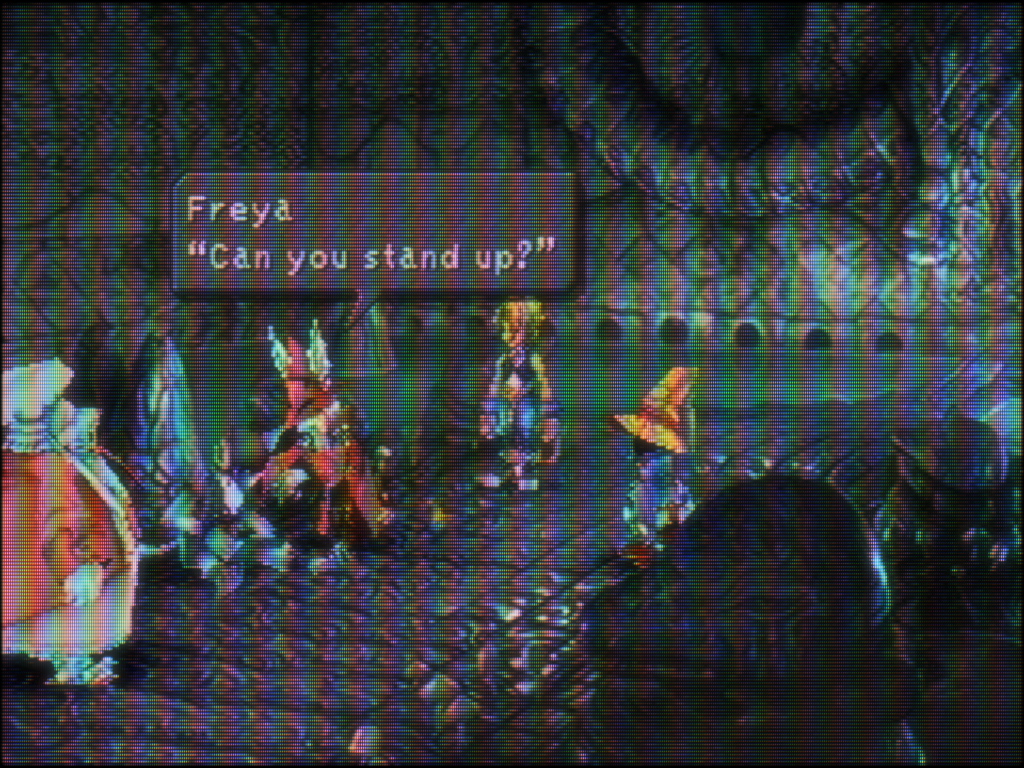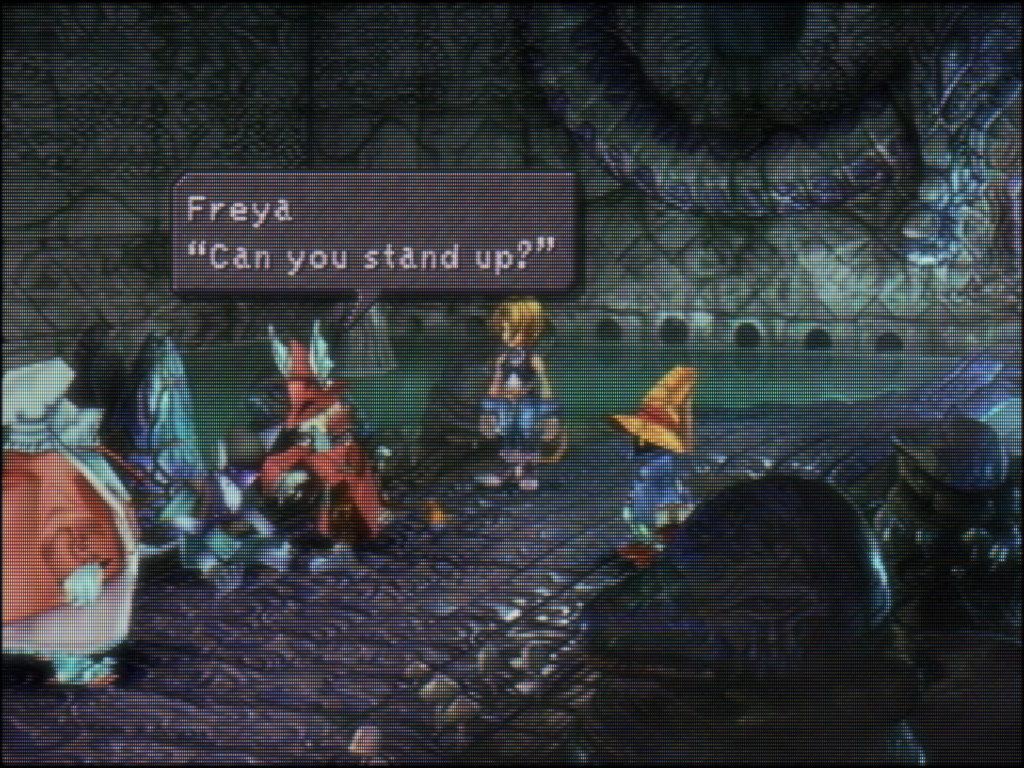
MDEC YUV filtering
PlayStation used a special unit called the MDEC to decode full motion videos instead of relying on software rendering (like the Saturn). These videos were encoded in YUV macroblocks and had to be converted from YCbCr to RGB so that the PSX can output the final image to the screen. A common issue with PlayStation emulators is that the chroma channel generally should be smoothed, but the PlayStation tend to leave it unfiltered.
There’s now a feature called ‘MDEC YUV smoothing’ which does filter the chroma channel. You can see the before/after screenshot above (video in question is the Resident Evil 1 intro) to see the kind of visual enhancement this brings to the picture.
SSAA (Super Sampled Anti Aliasing)

Some people prefer to play PlayStation1 games at native resolution and just applying a CRT shader at the end instead of running them at very high resolutions. However, there are some issues with that approach. 3D polygon graphics can tend to look very aliased and jagged and lacking in definition.
Alternatively, others like to crank the resolution up as high as possible. Both approaches have their pros and cons, but a definite disadvantage is that early 3D was very primitive so you might not want to see razor sharp angular polygons rendered at obscene resolutions, especially when a game relies a lot on pre-rendered backgrounds and other 2D elements. The Final Fantasy and Resident Evil games come to mind for one.
The option ‘Adaptive smoothing’ already exists and it attempts to distinguish 2D elements from 3D elements. It will smooth out the 2D elements but leave the 3D elements alone, resulting in a high resolution picture with the 2D elements not looking pixelated and ugly.
This new Vulkan-only option, SSAA, is a completely new approach. The image is rendered at the internal resolution you set it at (2x/4x/8x/16x, you name it). It then downsamples it at the final output stage back to a resolution somewhere in the ballpark of 240p. What you get is a low-resolution image with very clean anti-aliased 3D, kinda similar to the N64 actually which had native 8x multi sampled anti aliasing of some sort.
Certain CRT shaders expect a 240p-ish image to look their absolute best, so this option lends itself very well to that. It also can tend to look bit more coherent with mixed 2D and 3D in cases where adaptive smoothing fails.
Tip: We recommend you turn dithering off when using SSAA (Super Sampled Anti-Aliasing).
Example – Final Fantasy IX
Below you see SSAA in action with Final Fantasy IX on RetroArch. The first image is SSAA at 1x internal resolution. The second image is SSAA at 8x internal resolution. You can see how the downscaling does its magic in the second picture – it results in an image that almost looks like as if the polygon characters are part of the background itself.
Finally, a CRT shader is used – crt-royale-ntsc-320px.


Dithering for Vulkan
PlayStation and N64 output the final image at 16 bits per pixel. Since that isn’t a particularly wide colorspace, both systems used dithering in order to fake the illusion of a larger palette of colors. This combats color banding and wouldn’t be very noticeable at native resolutions on a CRT TV. On more powerful hardware and when emulated, the limitations of this approach become clear, and some would prefer either internally rendering the dithering at the internal resolution, or disabling it altogether.
Dithering was previously ignored by the Vulkan renderer and was always turned off, no matter what you configured. Now it will actually let you enable it. If dithering is enabled, the scanout image will be 16 bits per pixel. If it is disabled, the scanout image will be 32bits. We recommend that you turn dithering off if you are going to be using ‘SSAA’ (Super Sampled Anti Aliasing)

